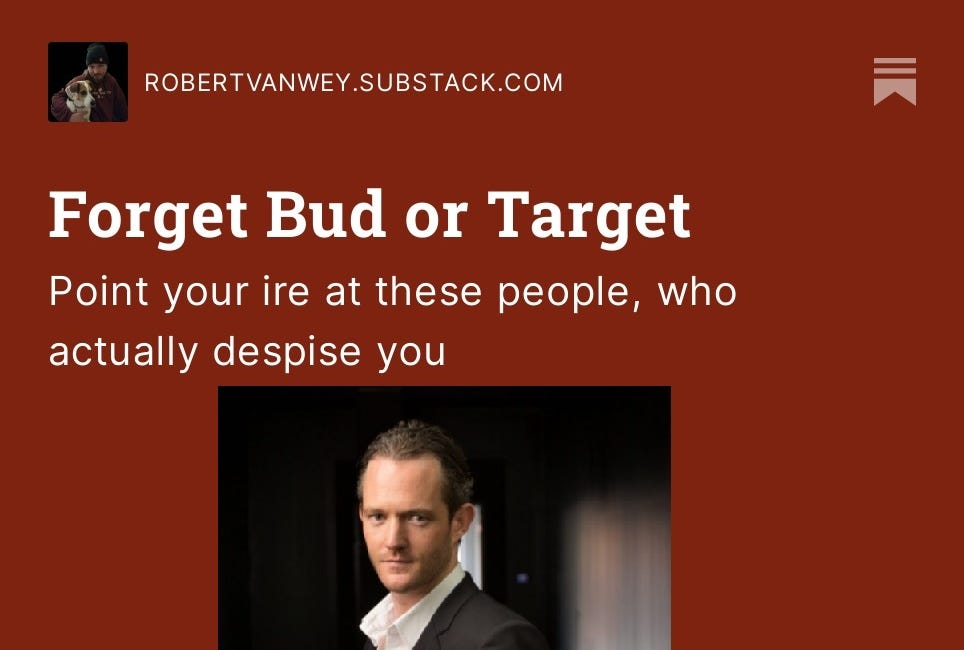Visit the Evidence Files Facebook and YouTube pages; Like, Follow, Subscribe or Share!
Beginning in late 2020 and early 2021, numerous media outlets reported a “surge” in shoplifting in the USA, with some—like Newsweek—even calling it “organized” crime. Stores such as Walmart and Target added to the frenzy by announcing they intended to beef up security or keep fewer open hours in response. In February of 2022, Axios trumpeted the headline, “Shoplifting reaches crisis proportions.” The same month, the New York Post reported that Rite-Aid closed one of its Manhattan stores due to a rash of shoplifting. Walmart CEO Doug McMillon told CNBC in December of 2022, “Theft is an issue. It’s higher than what it has historically been.” Certain media outlets took to the airwaves to describe the “American Dystopia” of theft and lawlessness. The underlying message was that one political party’s “soft on crime” policies were directly to blame for this alleged scourge.
Here's the problem: it was all bullshit.
For starters, self-interested parties bolstered the narrative by conflating a number of different crimes into one—shoplifting. As an example, CNN published an article in November 2021 that stated, “Why some US cities are facing a spree of ‘smash-and-grab’ crimes.” The problem with the headline should be readily apparent. “Smash-and-grab” crimes are not the same thing as shoplifting, the latter of which generates images of someone stuffing an item under their shirt or down their pants and walking out without paying for it. So-called smash-and-grab crimes routinely cause significant damage that almost always end with felony charges. The shoplifting surge narrative, however, asserted that softening policies on the former crime—i.e., reducing pants-stuffing theft from felony to misdemeanor—was the primary cause for the surge. If the softening argument is true, then including obvious still-felony-level acts is disingenuous. Regardless, that same CNN article quoted several people who invoked exactly this misleading conflation.
Lynda Buel, president of Ohio-based security consulting firm SRMC, told CNN that “The decriminalization of low-level offenses in some states has created opportunities for criminals to manipulate the system.” She continued, “For the low-level criminal, the benefit far outweighs the risk, since the threshold for a misdemeanor offense is $950 – meaning that a person can steal up to that amount and only be charged with a misdemeanor.” From that setup, she then made this profoundly dumb statement, “Organized crime rings are often behind these types of ‘smash-and-grab’ operations and pay low-level criminals to steal for them.” The CNN article spent a lot of ink on this drivel without attempting to explore its illogic. A smash-and-grab crime is almost always charged as a felony in every state because it commences with an act of violence—the “smash.” Depending on the circumstances, it is typically charged as either a robbery or burglary. Buel’s explanation about the misdemeanor “threshold,” therefore, neither applies nor makes sense.
Furthermore, the numbers do not support what Buel said. In 2017, Pew Charitable Trusts examined crime trends in 37 states that increased the threshold dollar amount that elevated a larceny from a misdemeanor to a felony. It reached three key conclusions:
Raising the felony theft threshold has no impact on overall property crime or larceny rates.
States that increased their thresholds reported roughly the same average decrease in crime as the 20 states that did not change their theft laws.
The amount of a state’s felony theft threshold—whether it is $500, $1,000, $2,000, or more—is not correlated with its property crime and larceny rates.
Across the United States during the period of the ‘surge’ (2020-2021), Robbery (the charge used for smash-and-grabs if victims are present) decreased by 8.9% and overall property crime rates did not change.
Pete Eliadis, a former law enforcement official and founder of security company Intelligence Consulting Partners, told CNN that another major factor was the lack of police resources and the purported “sapped” morale of many police officers resultant from the “defund the police” movement. This, too, is at best misleading as 90% of police budgets across the entire country increased from 2019 to 2022. In San Francisco, the city Eliadis spoke about in his statement to CNN and that is often touted as the epicenter of this alleged crime spree, the budget increased by 4.4% during that time period. Notwithstanding these facts, Eliadis further stated,
There’s no political will to prosecute the people in this climate. Why should a police officer waste time getting into an altercation when the person is not going to jail because it’s overcrowded and a prosecutor is not going to prosecute that case because it’s not high on the priority list?
This is silly. If a police officer ends up in an altercation, the perpetrator will be facing more than theft-related crimes. Moreover, Eliadis provided no evidence to support it. David Johnston, the vice president of asset protection and retail operations for the Washington, D.C.-based National Retail Federation (NRF), asserted much the same thing in September of 2023, writing “We are living in a nation where stealing is no longer considered a crime, and those stealing are not criminals.”
The Council on Criminal Justice found, however, that in the first six months of 2023, reported crimes of larceny fell by 4.1% nationwide, robberies fell by 3.6%, and residential burglaries by 3.8% compared to the same timeframe in 2022. Comparing the data from the first six months of 2019—the year before the pandemic—the Council found that larcenies were down by 7% and residential burglaries down by 26%, while nonresidential burglaries were up 5%. In all categories, the crime rates were near their lowest since 1960. Even in San Francisco, a city where videos went viral purportedly showing rampant theft there, larceny rates wiggled slightly down at the beginning of the pandemic (when many places were closed), then readjusted to rates that matched the average of the last 20 years as stores reopened. Whether police are disaffected with supposed changes in prosecutorial strategies is true or not, it would have no bearing on reported crime rates—and those rates are consistent with a decades-long downward trend.
But the retailers, and these so-called ‘security’ companies, want the public to believe otherwise. Target announced in May of 2023 that “organized retail crime will fuel $500 million more in stolen and lost merchandise this year compared with a year ago.” For Target, that claim came at the same time that it missed its Wall Street earnings expectation for the third quarter in a row. Note that Target faced a bigot-driven boycott during that same year. It managed to anger just about everyone else during that saga when it responded to the protest by issuing a statement announcing the removal of some of its Pride Collection products that formed a significant part of the controversy. In other words, the seemingly primary factors in its failure to perform had more to do with its own PR campaign mistakes than theft. Furthermore, Target’s number doesn’t add up. Judd Legum summed it up:
If the NRF's 2020 estimate has held, it means about 0.07% of sales, or 5% of total retail shrink, is attributable to ORC [organized retail crime]. If ORC at Target is in line with the industry, it means Target is projecting ORC will drive $25 million in additional shrink this year, not the $500 million figure featured in headlines.
Moreover, when asked for specific data supporting Target’s claim and others like it, an NRF spokesperson replied that the NRF does not have estimates based on specific types of retail crime, including organized retail crime. Legum pointed out that the overall loss of inventory among retailers according to NRF’s own survey showed that in 2021 retailers suffered 1.6% fewer losses than in 2020. Ray Wimer, a professor of retail practice at Syracuse University, told CNN “It’s much more convenient if we can blame it on people we already consider reprehensible” for retail outlets performing poorly in their quarterly calls to their shareholders. The Chief Financial Officer of Walgreens, James Kehoe, admitted as much in a shareholder call in February 2023. On that call, he said “Maybe we cried too much last year when we were hitting numbers that were 3.5% of sales.” The amount of theft loss as a percentage of sales, he confided, was closer to 2%—the relative norm for most large retailers year in and year out.
Why the Narrative is a Scam
The scam is evident when you consider two factors: 1) crime tracking numbers from nearly every source—the FBI, state, city, local, researcher databases, and retail organizations themselves do not support any of these claims. Sure, there are some localized spikes. But even in the place that has been foisted as the poster child of lawlessness and chaos—San Francisco—the numbers indicate only a slight aberration in an otherwise long-term declining trend. 2) When prompted for evidence supporting virtually any of these pronouncements, let alone the most outlandish ones, retailers produce nothing. Amanda Mull put it quite succinctly in the Atlantic back in 2021:
When I asked retailers how they squared falling property-crime rates with their own assertions that theft has skyrocketed, they weren’t exactly forthcoming. A spokesperson for Walgreens, which announced over the summer that it was closing some San Francisco locations because of high theft rates—a claim that has prompted skepticism in local media—declined to discuss the topic with me in any specifics. A spokesperson for CVS Health, which has been vociferous about organized theft and the need for new laws, told me that shoplifting has increased 300 percent in its stores since the beginning of the pandemic, and that the increase isn’t reflected in police data, because police were less responsive to reports of property crime when criminal courts were closed. The company would not say what that change represents in absolute numbers, elaborate on its theft-tracking methodology, or explain whether the rate has fluctuated significantly in the nearly two-year period since the pandemic began.
Retailers broadcast big numbers because those numbers have no meaning and are therefore difficult to contextualize. Instead, the public just hears the word “crisis” embedded in the message. To say that retailers faced a 300% spike in theft sounds bad, unless you are comparing it to the first six months of COVID when retailers faced almost no theft whatsoever because of closed stores and lockdowns. A three hundred percent increase over 1, is only 3. This is precisely what many of these companies are doing. It seems far more probable that executives are throwing around big numbers because they face an onslaught of competition in the form of online shopping and have yet to figure out how to meet their shareholders’ demands. A significant piece of evidence supporting this is the fact that many retailers have been closing stores that have not experienced the most theft events among their many locations. The more reasonable conclusion is that they close these stores due to under-performance or other, non-theft-related reasons.
The ‘apathetic police’ argument carries little weight either. No retailer has offered any evidence to support it—a rather telling detail. In only one case can the people proponing this narrative provide some ‘proof’ of their argument. San Francisco District Attorney Chesa Boudin lost a recall election in 2022, purportedly based on his failure to address spiking crime during the pandemic. Unfortunately, that situation is more complex, and dirty, than meets the eye. First, the recall effort was funded almost exclusively by mega-wealthy donors who did not like Boudin for other reasons. Second, while Republicans touted Boudin’s defeat as a rebuke of the alleged soft-on-crime policies of Democrats, the reality is that only about 25% of registered voters bothered to turn out, meaning three quarters of people did not find it a significant enough problem to head out to vote in a special election. Emily Lee, co-director of San Francisco Rising Action Fund, described it more accurately:
People have been just completely bombarded by ads and years of fear mongering and sensationalism in the media about ‘rising crime’ and ‘San Francisco being unlivable.’ Even though violent crime is down in San Francisco, facts didn’t matter. People emotionally were driven by that narrative. And it is a tough time. People want easy answers to hard problems, like homelessness and the drug overdose crisis, and they want something to latch onto. Voters most affected by crime and the criminal system were probably not well represented at the ballot box.
The circumstances there are muddier still because Boudin faced strong opposition for filing charges against a law enforcement officer for manslaughter for killing an unarmed black man. Some of the groups that decried that case also funded the advertisements supporting the recall vote against him.
What the Evidence Says
There is no big mystery here. The evidence points to the same scoundrel as it nearly always does: corporate greed. Like every new story about how the consumer gets screwed in some way or another, the shoplifting narrative is simply another contrived pile of hogwash by which corporate executives convince an overly uncritical population to accept a degradation of quality or fairness designed to uphold shareholder profit demands. We saw it in arguments about inflation during and immediately following the pandemic—corporate leaders peddled excuses like supply chain disruption, government policies or some other political balderdash, among many others. Yet curiously, corporate profits reached all-time highs during that allegedly ‘difficult’ period of inflation.
In my article The Year is 1984 I discussed how even traditional manufacturers have entered the data-exploitation game because of declining sales. Falling demand among manufacturers indicates diminishing sales for retailers who sell those goods. The culprit behind this general slide has much to do with the ever-decreasing quality of products and services sold. Cora Harrington, a writer and lingerie expert told Vox that consumers hold certain expectations when it comes to the price of various goods. As costs go up, companies cut corners on quality to maintain the same price range consumers expect. Many companies have also adopted “shrinkflation,” the practice of keeping items the same price but quietly reducing their physical size or quality. Furthermore, producing lousy products mean consumers will need to keep buying them over and again.
The shoplifting surge story is driven by all of this, spurred by the regular failure to meet quarterly expectations. These companies cannot routinely meet predicted profit margins because many of them cannot maintain inflated margins when it is based solely on consumers’ judgments of the products or services they sell. One need only look toward streaming services to see how a once-great idea has been obliterated by greed. When stale-minded, greedy executives and their underpaid creative teams cannot innovate their way out of an otherwise emaciated business model, they turn to the easiest tropes available to redirect attention away from their inadequacies. Here, shoplifting.
Blaming crime for their systemic failures is easy because ideological, clickbait-driven media has nefariously convinced a large number of Americans that crime is near the worst it has ever been, despite all evidence indicating precisely the opposite. With just a little window dressing, aided and abetted by partisan hucksters, a story of virtually no significant consequence became a nationwide panic (just like the gas stoves lunacy). The forces trying to distort reality here once again teamed up to hide the real disease infecting society to greater and greater detriment—unfettered greed. A financially corrupted media readily propelled the narrative to get those ever-sought-after views and clicks. Ideological drool-bags picked up the story to propel racist, partisan, or other nonsensical agendas from which they handsomely profit. Meanwhile, as usual, the despots at the top continue to protect their ever-widening wealth gap, bemusedly looking down upon the bovine herd vociferously arguing over whether the Holsteins or the Jerseys were to blame for a single soured quart.
Read about how the super rich hate everyone else, in their own words.
***
I am a Certified Forensic Computer Examiner, Certified Crime Analyst, Certified Fraud Examiner, and Certified Financial Crimes Investigator with a Juris Doctor and a Master’s degree in history. I spent 10 years working in the New York State Division of Criminal Justice as Senior Analyst and Investigator. Today, I teach Cybersecurity, Ethical Hacking, and Digital Forensics at Softwarica College of IT and E-Commerce in Nepal. In addition, I offer training on Financial Crime Prevention and Investigation. I am also Vice President of Digi Technology in Nepal, for which I have also created its sister company in the USA, Digi Technology America, LLC. We provide technology solutions for businesses or individuals, including cybersecurity, all across the globe. I was a firefighter before I joined law enforcement and now I currently run a non-profit that uses mobile applications and other technologies to create Early Alert Systems for natural disasters for people living in remote or poor areas.
Find more about me on Instagram, Facebook, LinkedIn, or Mastodon. Or visit my EALS Global Foundation’s webpage page here.






